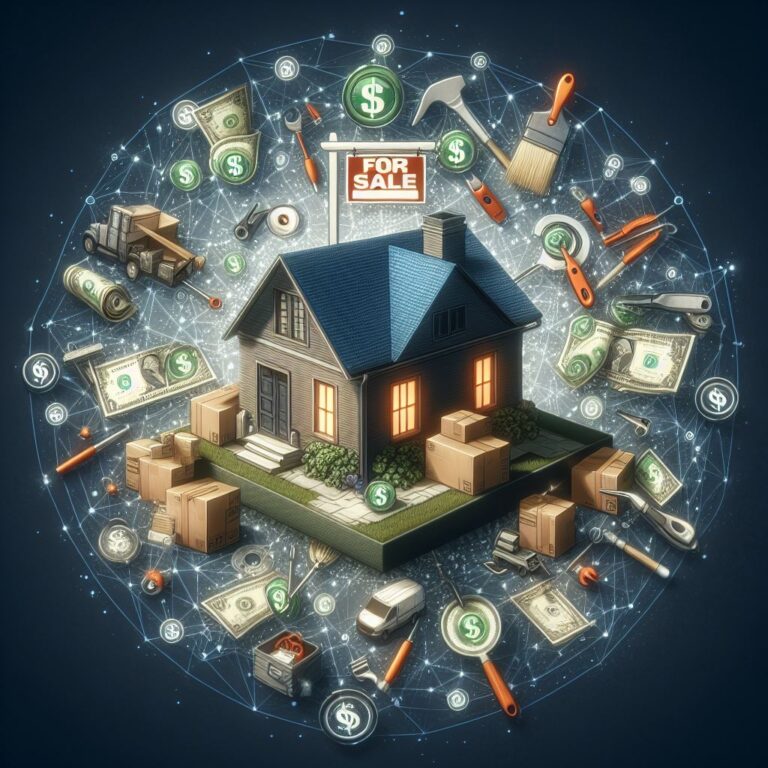Financial Lifelines for Homeowners in Crisis: Finding Solutions for Emergency Home Repairs
In times of unexpected home repairs, homeowners often face financial crises. The expenses associated with major system repairs such as water heaters, foundations, or roofs can quickly accumulate, leaving individuals unable to afford the necessary fixes.
In such circumstances, it becomes imperative to explore alternative financial options. Homeowners insurance may serve as a potential lifeline, covering the costs of repairs or reducing the financial burden through deductibles. Home equity can also be tapped into through loans or lines of credit, providing the funds needed for repairs, although careful consideration of long-term implications and potential interest charges is crucial.
Additionally, government assistance programs, offered through local Housing Authorities or the Department of Housing and Urban Development, as well as nonprofit organizations like Habitat for Humanity, can offer financial relief to qualifying homeowners.
By exploring these options, homeowners can find affordable solutions to alleviate the financial strain caused by emergency home repairs.
Key Takeaways
- Homeowners insurance can help cover the cost of emergency home repairs, potentially only requiring payment of the deductible.
- Tapping into home equity through a loan or line of credit is an option to fund home repairs, but careful consideration of the long-term financial implications is necessary.
- Government assistance programs, such as repair loans and grants, may be available to qualifying homeowners through the local Housing Authority or the Department of Housing and Urban Development.
- Nonprofit organizations, such as Habitat for Humanity, can provide resources and support for homeowners in need of repairs, and church volunteers may also offer assistance under certain circumstances.
Average Home Repair Costs
When facing unexpected home repair costs, homeowners may find themselves burdened by the financial implications of fixing major issues. Some examples of these major issues include a water heater replacement or repairing a bowed or cracked foundation. On average, a water heater replacement can cost around $976, while repairing a bowed or cracked foundation can cost around $1000 per beam or pier. These costs can be significant and put a strain on homeowners’ budgets, especially if they are not prepared for such expenses.
It is important for homeowners to be aware of these average repair costs so that they can plan accordingly and explore their options for financial assistance. By understanding the potential costs involved, homeowners can make informed decisions and seek out resources that may provide financial relief for emergency home repairs. Some of these resources include insurance coverage, home equity loans, government assistance programs, and nonprofit organizations. Exploring these options can help relieve the financial burden and ensure that homeowners can address the necessary repairs without causing further financial strain.
Homeowners Insurance
Homeowners insurance can provide financial protection for unexpected home repairs. When faced with a costly repair, it is essential to review your policy and understand what is covered. By checking if the damage is covered by your insurance before paying out-of-pocket, you may only need to pay the deductible. To give you an idea of the average costs, here is a breakdown of some common home repairs:
| Repair Type | Average Cost |
|---|---|
| Water heater replacement | $976 |
| Bowed or cracked foundation | $1000 per beam |
| Major roof leak repair | $2500 or more |
| Major home repair project | $10,043 |
For many homeowners, these costs can be overwhelming. However, homeowners insurance can offer financial protection in case of unexpected repairs. It is crucial to review your policy and explore all available options to alleviate the financial burden.
Tapping Into Equity
To address the financial strain of home repairs, homeowners can explore the option of utilizing their home equity. Here are four important points to consider when tapping into equity:
- Assess your home equity: Before considering this option, homeowners should determine the amount of equity they have in their home. This can be calculated by subtracting the outstanding mortgage balance from the current market value of the property.
- Understand the risks: Utilizing home equity means taking on additional debt. Homeowners should be aware of the potential risks, such as increased monthly payments and the possibility of foreclosure if they are unable to repay the loan.
- Research different options: Homeowners can choose between a home equity loan or a home equity line of credit. It is essential to research and compare the terms, interest rates, and repayment options offered by different lenders.
- Seek professional advice: Consulting with a financial advisor can provide valuable insights and help homeowners make informed decisions about tapping into their home equity. They can assess the financial implications and determine if this option aligns with their long-term goals and financial situation.
Government Assistance
To access additional financial support for home repairs, homeowners can turn to government assistance programs. Depending on income, age, and location, homeowners may qualify for assistance programs through their local Housing Authority. The Department of Housing and Urban Development also offers repair loans and grants to qualifying homeowners.
Government assistance can help alleviate the financial burden of home repairs, providing much-needed relief in times of crisis. It is important for homeowners to research available programs and eligibility requirements in their area. Applying for government assistance can provide a lifeline for homeowners facing emergency repairs.
Nonprofit Organizations
Exploring the support available for homeowners in crisis, nonprofit organizations play a crucial role in providing assistance with home repairs. These organizations offer a range of resources and support to help homeowners facing financial difficulties address their home repair needs. Here are four ways nonprofit organizations can assist homeowners in need:
- Financial Assistance: Nonprofit organizations often provide financial aid to cover the cost of home repairs. Through grants or low-interest loans, they can help homeowners access the funds they need to address critical repairs and ensure the safety and integrity of their homes.
- Volunteer Services: Many nonprofit organizations mobilize volunteers to assist with home repairs. These volunteers may include skilled tradespeople or community members willing to lend a helping hand. By utilizing volunteer services, homeowners can benefit from free or low-cost labor, reducing the overall cost of repairs.
- Education and Guidance: Nonprofit organizations also offer educational programs and resources to help homeowners navigate the complexities of home repairs. They provide guidance on obtaining estimates, understanding contracts, and making informed decisions about repair options. These resources empower homeowners to advocate for themselves and make sound choices.
- Partnerships and Collaborations: Nonprofit organizations often partner with other community-based organizations, local businesses, and government agencies to maximize their impact. Through these collaborations, they can pool resources, expertise, and funding to provide comprehensive support to homeowners in crisis.
Financial Relief Options
One viable solution for homeowners in crisis is seeking financial relief through various options.
When faced with unexpected home repairs, it can be overwhelming to find the funds to cover the costs. However, there are several avenues to explore.
Firstly, homeowners insurance should be reviewed to see if the damage is covered and if the deductible needs to be paid.
Additionally, tapping into home equity through a loan or line of credit may be an option, although careful consideration of interest charges is necessary.
Government assistance programs offered by the local Housing Authority or the Department of Housing and Urban Development can provide financial support based on income, age, and location.
Lastly, nonprofit organizations such as Habitat for Humanity may offer assistance with home repairs.
Exploring these options can provide homeowners with the financial relief they need during a crisis.
Frequently Asked Questions
Are There Any Limits to the Coverage Provided by Homeowners Insurance for Emergency Home Repairs?
There may be limits to the coverage provided by homeowners insurance for emergency home repairs. It is important to review your policy to understand what is covered and if there are any limitations or exclusions.
How Do I Determine if I Qualify for Government Assistance Programs for Home Repairs?
To determine if you qualify for government assistance programs for home repairs, consider factors such as income, age, and location. Research available programs and eligibility requirements through your local Housing Authority or the Department of Housing and Urban Development.
What Other Options Should I Consider Besides Tapping Into My Home Equity for Funding Emergency Repairs?
When considering funding for emergency repairs, homeowners should explore options beyond tapping into home equity. These may include checking insurance coverage, seeking government assistance, and reaching out to nonprofit organizations for affordable solutions.
Are There Any Specific Eligibility Requirements for Nonprofit Organizations to Provide Assistance With Home Repairs?
Nonprofit organizations may have specific eligibility requirements for providing assistance with home repairs. It is recommended to reach out to local organizations and inquire about their criteria for assistance.
Can I Combine Multiple Financial Lifelines, Such as Homeowners Insurance and Government Assistance, to Cover the Costs of Emergency Home Repairs?
Yes, it is possible to combine multiple financial lifelines such as homeowners insurance and government assistance to cover the costs of emergency home repairs. It is important to review your insurance policy and research available government programs to determine eligibility and coverage.






